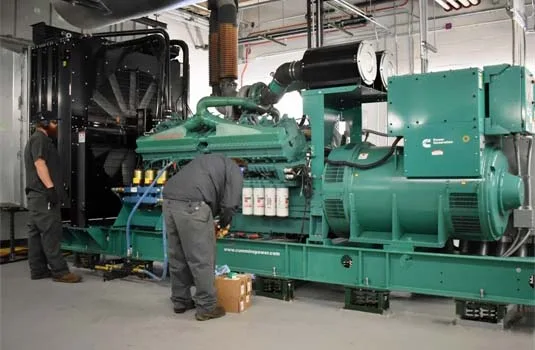Oil analysis is a crucial process in monitoring the health and performance of generator engines, including Cummins generators. By analyzing the properties of lubricating oil, technicians can gain valuable insights into the internal condition of the engine without disassembling it. Regular oil analysis can help extend engine life, improve reliability, and detect issues before they lead to costly repairs.
What is Oil Analysis?
Oil analysis involves examining the lubricating oil properties to assess:

- Fluid Properties: Ensures that the correct oil and additives are being used, checks for any depletion of additives, and measures the oil’s viscosity.
- Contamination: Identifies the presence and source of contaminants in the oil, such as foreign liquid intrusion or dirt.
- Wear from Debris: Detects particles that may be produced from mechanical wear within the engine, providing insight into the internal condition of the engine.
By performing regular oil analysis, potential engine issues can be detected early, allowing for proactive maintenance and reducing the risk of major failures.
Obtaining an Oil Sample
To perform oil analysis, it’s essential to properly collect an oil sample. Do not collect the sample by draining the oil from the drain plug, as this may result in inaccurate readings.
Follow these steps to collect a proper oil sample:
- Prepare the Sample Kit: Use an oil sampling kit designed for this purpose. These kits typically include a container, a line, and a vacuum device.
- Clean the Area: Ensure the fill tube or dipstick tube is clean before inserting the sample line to avoid contamination.
- Insert the Sample Line: Attach the line to the vacuum device and insert it into the engine’s fill tube or dipstick tube until the end reaches the engine oil pan, approximately halfway down.
- Draw the Oil: Operate the hand vacuum device to draw the oil into the sample container.
- Label the Sample: Label the container with essential information such as the facility name, engine details, and the date of the sample collection.
By following these steps, you will obtain a representative oil sample for analysis.
Analyzing the Oil Sample
Once the oil sample is collected, there are two primary methods to analyze the oil:
- Laboratory Testing (External Testing Service):
- An external laboratory conducts the oil analysis and provides a written report with results indicating whether the oil sample has passed or failed.
- The report typically includes generic advice based on the oil’s condition, but may not provide specific guidance tailored to your engine.
- In some cases, the results may need to be submitted to the engine manufacturer for more advanced consulting.
- Engine Manufacturer Supplied Test Kit:
- Many engine manufacturers provide specialized test kits for oil analysis. These kits often include basic and advanced options and are tailored to the specific engine model.
- The kits contain individual tests, instructions, and guidance on interpreting results. Some kits also provide online support for troubleshooting and questions.
- Manufacturer-supplied kits are valuable for obtaining service engineering advice directly from the engine manufacturer, ensuring that the analysis is aligned with the engine’s specific needs.
Benefits of Oil Analysis
- Early Detection: Oil analysis allows for the identification of issues such as contamination, wear, or additive depletion before they escalate into costly repairs.
- Prolonged Engine Life: Regular oil testing and maintenance can help extend the lifespan of your generator engine by keeping it in optimal condition.
- Cost Efficiency: By catching problems early, oil analysis helps prevent more expensive repairs or engine replacements, saving money in the long run.
Conclusion
Oil analysis is an essential part of maintaining the health of generator engines. Whether using an external laboratory or a manufacturer-supplied kit, performing oil analysis regularly allows for better insight into engine performance and potential issues. By following proper sampling procedures and analyzing oil properties, you can ensure your generator remains reliable and efficient, ultimately extending its operational life.